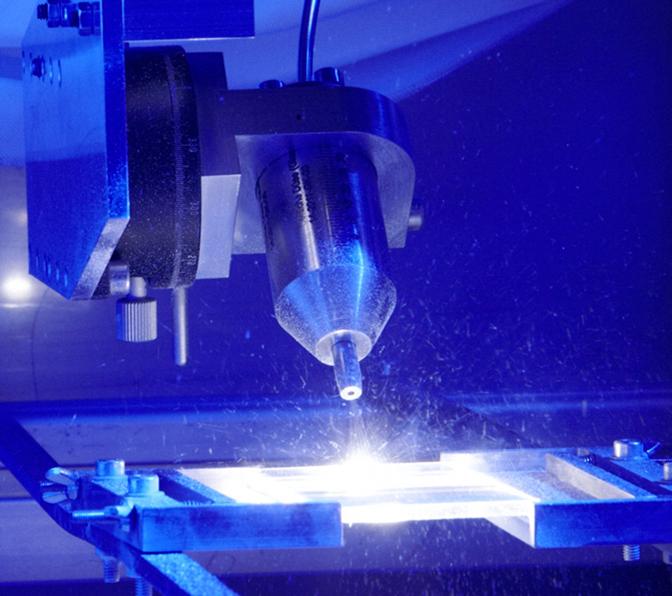Automated joining of complex glass parts

Laser-based joining of glass parts using powder filler material. Photo: LZH
Scientists of the Glass Group at the Laser Zentrum Hannover e.V. (LZH) have therefore developed a process for the laser-based joining of borosilicate and quartz glass. In order to achieve a constant quality of the parts, the surface temperature is controlled without contact during the process, and thus, the glass viscosity for joining is reduced in a pre-defined way.
Powder filler material is used for bridging the gap. The results of the project show that the new process setup is very well suited for automated manufacturing. The research work was supported by the German Federal Ministry of Economics and Technology.
Complex glass parts are, in most cases, manufactured manually by a glass apparatus maker using a gas flame. Since the process cannot be entirely controlled, the quality fluctuates. In order to be able to automate the production of complex parts, e.g. for chemical apparatus engineering, LZH scientists have developed a laser-based process for joining glass parts made of borosilicate and quartz glass.
The special feature of the process is an integrated temperature control that regulates the viscosity of the parts in a pre-defined way during the welding process: Here, a CO2 laser beam source provides the required amount of heat energy. The temperature is measured without contact using a pyrometer.
In order bridge gaps at, for example, L angle geometries, glass powder is added as filler material during the joining process. In doing so, the glass powder is melted and forms a homogeneous welding seam with a constant bead height. The new process setup enables automated joining of glass in various welding configurations, such as butt joints, fillet joints and L angles.
The „Research Association Technique and Glass“ (FTG e.V.) submitted the application for the research project titled “laser-based joining of glass parts using powder filler material” (powder joining). The commitment and know-how of the FTG members significantly contributed to the success of the project.
The IGF project no. 17029 N „laser-based joining of glass parts using powder filler material“ of the „Research Association Tech-nique and Glass“ (FTG e.V., Bronnbach 28, 97877 Wertheim, Germany) was supported by the German Federation of Industrial Research Associations (AiF e.V.) within the scope of the Industrial Collective Research Programme (IGF) of the German Federal Ministry of Economics and Technology on the basis of a decision by the German Bundestag.
The complete project report is available upon request to presse@lzh.de.
Media Contact
More Information:
http://www.lzh.deAll latest news from the category: Materials Sciences
Materials management deals with the research, development, manufacturing and processing of raw and industrial materials. Key aspects here are biological and medical issues, which play an increasingly important role in this field.
innovations-report offers in-depth articles related to the development and application of materials and the structure and properties of new materials.
Newest articles

Sea slugs inspire highly stretchable biomedical sensor
USC Viterbi School of Engineering researcher Hangbo Zhao presents findings on highly stretchable and customizable microneedles for application in fields including neuroscience, tissue engineering, and wearable bioelectronics. The revolution in…

Twisting and binding matter waves with photons in a cavity
Precisely measuring the energy states of individual atoms has been a historical challenge for physicists due to atomic recoil. When an atom interacts with a photon, the atom “recoils” in…

Nanotubes, nanoparticles, and antibodies detect tiny amounts of fentanyl
New sensor is six orders of magnitude more sensitive than the next best thing. A research team at Pitt led by Alexander Star, a chemistry professor in the Kenneth P. Dietrich…





















